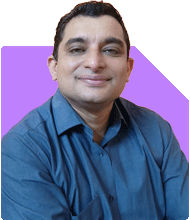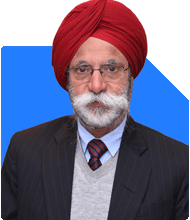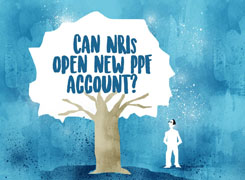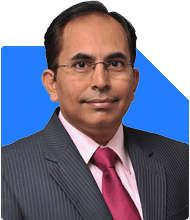Ramalingam Kalirajan |10902 Answers |Ask -Follow
Mutual Funds, Financial Planning Expert - Answered on May 26, 2024
He has an MBA in finance from the University of Madras and is a certified financial planner.
He is the director and chief financial planner at Holistic Investment, a Chennai-based firm that offers financial planning and wealth management advice.... more

I have SIP with NJ wealth and i want to transfer this SIP to my DEMAT. Is it possible and how it should be done?
Transferring your SIP from NJ Wealth to your DEMAT account is indeed possible, but it's essential to consider the process and potential benefits of transferring it to a Mutual Fund Distributor (MFD) instead.
Understanding the Transfer Process
Transferring your SIP from NJ Wealth to your DEMAT account involves a series of steps:
Contact NJ Wealth: Reach out to NJ Wealth and inform them about your intention to transfer your SIP to your DEMAT account. They will provide you with the necessary forms and guidance.
Fill Transfer Forms: Fill out the required forms provided by NJ Wealth, which typically include a SIP transfer request form and any additional documentation as per their requirements.
Submit Forms: Submit the completed forms and any supporting documents to NJ Wealth for processing. They will initiate the transfer process on your behalf.
Await Confirmation: Once the transfer request is initiated, NJ Wealth will coordinate with your DEMAT account provider to complete the transfer. You will receive confirmation once the transfer is successfully executed.
Benefits of Transferring to MFD Instead
While transferring your SIP to your DEMAT account is feasible, it's advisable to consider transferring it to an MFD who can offer personalized service and advice:
Personalized Service: MFDs provide personalized investment advice tailored to your financial goals, risk tolerance, and investment horizon. They can offer customized solutions based on your individual needs.
Active Portfolio Management: MFDs actively monitor your investments and provide regular updates and reviews to ensure your portfolio remains aligned with your objectives. They can suggest adjustments or reallocations as needed.
Accessibility and Support: MFDs offer accessibility and support, allowing you to reach out to them for any queries or assistance related to your investments. They prioritize client relationships and aim to provide prompt and efficient service.
Final Considerations
Before making a decision, carefully evaluate your investment objectives and preferences. Consider consulting with a Certified Financial Planner to assess the best course of action based on your individual circumstances and goals.
Best Regards,
K. Ramalingam, MBA, CFP,
Chief Financial Planner,
www.holisticinvestment.in
You may like to see similar questions and answers below
Omkeshwar Singh | Answer |Ask -Follow
Head, Rank MF - Answered on Apr 27, 2022
Vivek Lala |323 Answers |Ask -Follow
Tax, MF Expert - Answered on Jul 23, 2024
Ramalingam Kalirajan |10902 Answers |Ask -Follow
Mutual Funds, Financial Planning Expert - Answered on Aug 29, 2024
Milind Vadjikar | Answer |Ask -Follow
Insurance, Stocks, MF, PF Expert - Answered on Nov 12, 2024
Ramalingam Kalirajan |10902 Answers |Ask -Follow
Mutual Funds, Financial Planning Expert - Answered on Nov 21, 2024
Anu Krishna |1749 Answers |Ask -Follow
Relationships Expert, Mind Coach - Answered on Dec 17, 2025
Anu Krishna |1749 Answers |Ask -Follow
Relationships Expert, Mind Coach - Answered on Dec 17, 2025
Radheshyam Zanwar |6748 Answers |Ask -Follow
MHT-CET, IIT-JEE, NEET-UG Expert - Answered on Dec 17, 2025
Anu Krishna |1749 Answers |Ask -Follow
Relationships Expert, Mind Coach - Answered on Dec 17, 2025
Dr Shakeeb Ahmed Khan |184 Answers |Ask -Follow
Physiotherapist - Answered on Dec 17, 2025
T S Khurana |538 Answers |Ask -Follow
Tax Expert - Answered on Dec 17, 2025
T S Khurana |538 Answers |Ask -Follow
Tax Expert - Answered on Dec 17, 2025
Janak Patel |72 Answers |Ask -Follow
MF, PF Expert - Answered on Dec 17, 2025
Ramalingam Kalirajan |10902 Answers |Ask -Follow
Mutual Funds, Financial Planning Expert - Answered on Dec 17, 2025
Samraat Jadhav |2511 Answers |Ask -Follow
Stock Market Expert - Answered on Dec 17, 2025
































